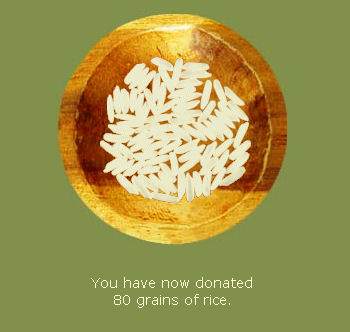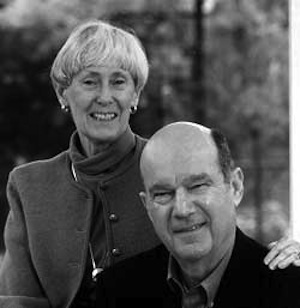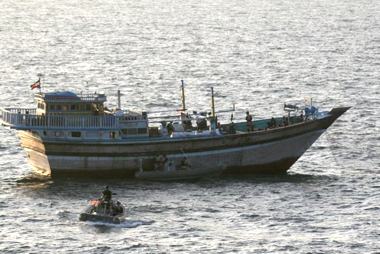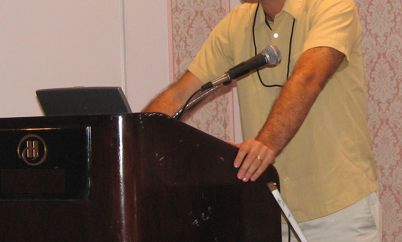 We can even use holidays to enrich the soul and strengthen it for harder times, so that when those times come, as they will and they must, you can “make good of this.”
We can even use holidays to enrich the soul and strengthen it for harder times, so that when those times come, as they will and they must, you can “make good of this.”
My good friend Wally Bock wrote an article for his newsletter which he titled “Christmas and Cancer Both Begin with C.” Wally’s mother died of cancer in 1982 after fourteen years as one of the earliest recipients of chemotherapy. One of her life’s mottos was “What good can we make of this?” I was honored when Wally wrote about my experience alongside his mother’s.
It was right before Christmas, a year ago, that my friend Deb found out that she had breast cancer. She wasn’t alone. Almost two hundred thousand women are diagnosed with breast cancer every year according to the National Institutes of Health. Forty-four thousand of them die from it. Deb is a professional colleague and one of my dearest and deepest friends. But she’s not the first woman I cared about who got cancer.
That was my mom. That was in 1968. The doctors told mom that she only had a few months to live. She told them they were wrong. “I’m not done yet,” she said, with that firm set to her mouth that brooked no nonsense. She set out to prove the doctors wrong. She kept setting new goals. First she couldn’t go till she had a grandchild. Then it was a granddaughter to go with the grandson. Then they had to be in school and so on. The goals pulled her forward. We know from a variety of studies of survivors of all kinds of disease and trauma, that having something to live for is important. Support systems are important, too. For mom they included friends and faith and family. My dad retired early so that they could travel together and neither of them quit planning forward. It took fourteen years for the cancer to finally win. Fourteen years of then-new chemotherapy and grinding, crushing fatigue, of successes and setbacks. When my mother died she had airline tickets in the purse that was hanging in the hospital. She was to have joined my father in Europe when “this hospital stay” was done. She died in the middle of a book. In all of that living and moving forward she was simply what she had always been.
When we were kids and something bad would happen to one of us, my mom used to ask, “What good can you make of this?” She lived that out, making good of her cancer. So did Deb.
They both reached into themselves to find what good there was and reached out to share with others. But the thirty years between them make for some differences in how that happened and what they did. For my mom, chemo was new and experimental. So she faithfully kept a record of how she reacted to treatment. She wrote down what worked and how she felt and the details of every hospital visit. She chronicled the successes and setbacks. She made careful note of possible interactions of drugs, and foods and activities with her therapies. When she died, she willed the journal to her physician, to help with research.
Deb lives in the Internet era. And she had the Web and email. And so, shortly after the diagnosis, an ever-widening circle of friends began receiving “Updates from Deb.” Some were upbeat “So how do I feel? Absolutely outstandingly excellent. I just happen to have breast cancer and need surgery, but otherwise I’m great and planning forward.” Others shared fear and frustration and hopes and exhortations. Here are a couple of other quotes. “Please continue to treat me “normally” (whatever that is!) and don’t tip toe around my feelings. I don’t mind talking about it and, in fact, think the message should get out about breast cancer so more are aware of it and how it can be caught early and sometimes prevented.”
“I’m usually so active – having ‘nap attacks’ in the middle of the day or having to come home early from events is not my idea of fun.” “So thanks for letting me voice my frustrations – pray for patience for me and continued ‘easy’ treatments.” For her and mom, the hard part was not the treatments as much as the loss of the ability to “do things.” So they conserved strength and found other ways to “make good of this.” “
Making good of this” for Deb reached in two directions. Her emails reached to other people with cancer, especially to women with breast cancer, telling them they weren’t alone. She described what she was going through so they would know and anticipate things. She shared resources with them like many of the websites I’ll share at the end of this. But the good was also, sometimes I think mostly, for those of us who don’t have the disease. We heard from Deb what she needed from us and what challenges she really faced. That helped us be friends and supporters for her. I don’t think I’ve seen much of that elsewhere. So much of the material on cancer is directed toward those the disease attacks and very little is directed toward those who love them. We’re more or less expected to know how best to support them and understand what they’re going through. But we often don’t and Deb’s letters closed that gap.
In her most recent Update, the one I received this weekend, that’s who the message is aimed at. Deb told us about how the effects of chemotherapy hang on and that, just when it seems that it’s over, there’s still a bit of time to go. We can’t all go back to normal just yet. For some people who had loved ones with the disease, there was a special benefit. Not everyone attacked by cancer has Deb’s strength or her ability to write. And so, often, they learned from Deb what their own loved one might want to tell them, but couldn’t right then. Both my mom and my friend took control of their therapy. A physician once talked to my mom about how “they” were fighting the disease. “OK,” she said, “you take the medicine for a while and I’ll write the prescriptions.”
Deb scoured the web for information and the power it brings. She went to meetings with her physicians knowing about treatments and side effects. That information helped her make the critical choices about her treatment and who she would allow to do it. Not every physician made the cut. In the end, though, it was mostly not intellect or communication that these two remarkable women used to fight a malicious disease. Mostly, it was faith and friends. They talked to friends and listened to us and let us love them. They prayed and they encouraged us to pray for them. They drew on their faith in God and in themselves. In doing that, they set an example of more than just how to fight a disease. They reminded us of the power of those friends, the power of that faith. In the last year we’ve seen several studies that tell us that prayer helps healing and that folks who believe they will heal are more likely to heal. Remember that this Christmas season. More than presents and parties, this should be a time of friends of and of faith. Christmas is a time to enrich the soul and strengthen it for harder times, so that when those times come, as they will and they must, like my mom and like Deb, you can “make good of this.”
(Written by Wally Bock)
(www.positivehope.com)
 Every day you can make a contribution to easing world hunger just by clicking on the “donate free food” button on the internet home page of The Hunger Site (www.thehungersite.com).
Every day you can make a contribution to easing world hunger just by clicking on the “donate free food” button on the internet home page of The Hunger Site (www.thehungersite.com).

































